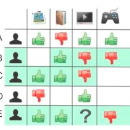Influenced by the great success of deep learning in computer vision and language understanding, research in recommendation has shifted to inventing new recommender models based on neural networks. In recent years, we have witnessed significant progress in developing neural recommender models, which generalize and surpass traditional recommender models owing to the strong representation power of neural networks. In this survey paper, we conduct a systematic review on neural recommender models from the perspective of recommendation modeling with the accuracy goal, aiming to summarize this field to facilitate researchers and practitioners working on recommender systems. Specifically, based on the data usage during recommendation modeling we divide the work into collaborative filtering and information-rich recommendation: 1) collaborative filtering, which leverages the key source of user-item interaction data; 2) content enriched recommendation, which additionally utilizes the side information associated with users and items, like user profile and item knowledge graph; and 3) temporal/sequential recommendation, which accounts for the contextual information associated with an interaction, such as time, location, and the past interactions. After reviewing representative work for each type, we finally discuss some promising directions in this field. We have also summarized the related papers at https://github.com/lmcRS/AWS-recommendation-papers.
翻译:由于在计算机视野和语言理解方面的深层学习取得了巨大成功,因此建议研究已转向在神经网络基础上创建新的建议型号,近年来,我们在开发神经建议型号方面取得了重大进展,这些型号由于神经网络的强大代表力而普遍化和超过传统建议型号;在本调查文件中,我们从建议建模的角度,从准确性目标的角度对神经建议型号进行系统审查,目的是总结该领域,以便利研究人员和从业人员在建议型号系统上开展工作。具体地说,根据建议型号期间的数据使用情况,我们把工作分为合作过滤和信息丰富的建议:1)合作过滤型号,利用用户项目互动数据的关键来源;2)内容丰富型号,进一步利用与用户和项目相关的侧面信息,如用户概况和项目知识图;3)时间/顺序建议,其中说明与互动有关的背景信息,如时间、地点和过去的互动。在审查每种类型的代表工作之后,我们最后讨论了这一领域的一些有希望的方向。我们还总结了在 http://qubr/comms上与A-wals/mas有关的建议。





